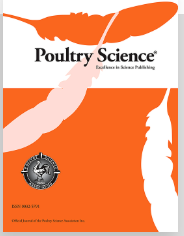A publication in Poultry Science (Vol 104, May 2025) entitled “Inactivation of Salmonella and avian pathogens on Hatchery eggs using gas phase hydroxyl-radical process vs formaldehyde fumigation: Efficacy, hatching performance and grow-out of Chickens” by Scientists of Department of Food Science, University of Guelph describe the disinfection of that can reduce the pathogen burden while preserving the egg integrity and embryo. In the study, a gas phase hydroxyl-radical process was validated and verified as a hatchery egg disinfection method. The process involved applying a hydrogen peroxide mist in combination with ozone gas and UV-C to generate antimicrobial hydroxyl radicals. The treatment (2 % hydrogen peroxide, 20 ppm ozone, and 19 mJ/cm2 UV-C; designated as HR) for inactivating Salmonella Enteritidis and Typhimurium inoculated onto eggs could eliminate the pathogens. Surface sterilization was achieved by a pre-treatment of eggs with the photo-catalyst riboflavin (13.75 mM) followed by 3 % hydrogen peroxide delivered at 70 °C prior to the hydroxyl-radical treatment (3 % hydrogen peroxide, 20 ppm ozone, and 114 mJ/cm2 designated HRS). The surface sterilization of eggs coincided with the removal of the cuticle layer with the HRS treatment but not HR. The cuticle layer was also compromised by formaldehyde treatment. When the different treatments were applied to fertile hatchery eggs (n=50 eggs per treatment group), there was no significant difference in hatchery rate (64-74 %), with hatch to fertility being higher for disinfected eggs (89-97 %) compared to the non-treated control (80 %). The seven-day mortality (0 – 2 birds) and feed conversion ratio (1.59 – 1.75 kg/kg feed) did not significantly differ between the treated vs controls. The HR treatment could eliminate Enterococcus faecium Escherichia coli (>5 log CFU/egg reduction). However, HRS was required to inactivate Pseudomonas aeruginosa (>5 log CFU/egg reduction) and reduce Aspergillus niger spores (3.08±2.25 log CFU reduction). The study provided treatment options for hatchery egg disinfection and alternatives to formaldehyde treatment. @ https://www.sciencedirect.com/science/article/pii/S0032579125002627

